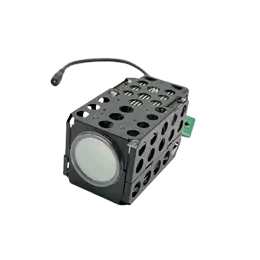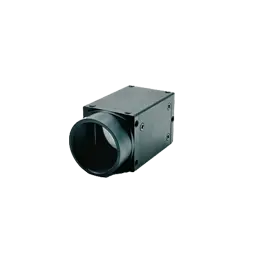A typical machine vision system comprises five main modules: lighting, lens, camera, image acquisition, and vision processor. Let's take a look at the purposes, characteristics, and workings of these five structures.
Lighting is an important factor that affects the input data quality and application effectiveness of machine vision systems. The lighting system maximizes the characteristics of the object being measured and reduces the impact of contrast objects in the background, enabling the high-speed camera to clearly "see" the object being measured.
High-contrast images can reduce system difficulty and improve system stability; on the other hand, low-contrast images can increase processing time and complexity. The success of machine vision applications largely depends on lighting settings. A suitable lighting system can make the entire visual detection system more efficient and accurate. As there is no universal machine vision lighting equipment, specific illumination devices should be selected for each application to achieve optimal results.
Light sources can be visible or invisible. The commonly used visible light sources are incandescent lamps, fluorescent lamps, mercury lamps, and sodium lamps. The disadvantage of visible light is that the light energy cannot be kept stable. It is urgent to solve the problem of stabilizing the light to a certain extent in the practical process. On the other hand, environmental light may affect the quality of the image, so the method of adding a protective screen can be used to reduce the effect of environmental light. Key points for machine vision system lighting: using strong light to detect missing materials, using suitable wavelengths for accurate positioning, using non-scattering lighting to detect glass cracks, using diffuse light to inspect transparent packaging, using color to create contrast, etc.
The camera lens comprises multiple lenses, a variable (brightness) aperture, and a focus ring. The operator adjusts the variable aperture and focus by observing the camera display to ensure the image's brightness and clarity, following machine vision basics. When selecting a lens, multiple factors need to be considered, such as focal length, target height, image height, zoom ratio, distance from image to target, etc. In practical applications, selecting a lens that matches the field of view and focusing on a large depth-of-field image are two important aspects when choosing a lens.
Machine vision systems use cameras to transmit images that are projected onto the sensor through the lens to machine equipment that can store, analyze, and/or display them.
According to different standards, cameras can be divided into different types. According to the chip type, they can be divided into CCD cameras and CMOS cameras. According to the sensor structure, they can be divided into line scan cameras and area scan cameras. According to the scanning method, they can be divided into interlaced scanning cameras and progressive scanning cameras. According to the resolution size, they can be divided into ordinary-resolution cameras and high-resolution cameras. According to the output signal mode, they can be divided into analog cameras and digital cameras. According to the output color, they can be divided into monochrome (black and white) cameras and color cameras. According to the output signal speed, they can be divided into normal-speed cameras and high-speed cameras. According to the response frequency range, they can be divided into visible light (ordinary) cameras, infrared cameras, ultraviolet cameras, etc.
CCD and CMOS are two widely used image processing technologies, and their main difference lies in the different transmission methods. The main performance differences include noise, power consumption, resolution, sensitivity, cost, and many other factors.
For industrial and scientific applications, the goal of image acquisition cards is to obtain an accurate digital image from the initial video signal grounded in machine vision basics. The image acquisition card in a machine vision system primarily consists of several modules, including video input, A/D conversion, timing and acquisition control, image processing, bus interface and control, and output and control.
The image acquisition card is just one component of a complete machine vision system, but it plays a crucial role. The image acquisition card directly determines the interface of the camera, such as black and white, color, analog, digital, and so on. Different types of industrial cameras in machine vision inspection systems require different choices of image acquisition cards. When choosing, factors such as card stability, price, functionality, and their impact on product cost should be carefully considered.
The vision processor combines the image acquisition card and the processor into one. In the past, when computer speeds were slower, a vision processor was used to speed up visual processing tasks.



